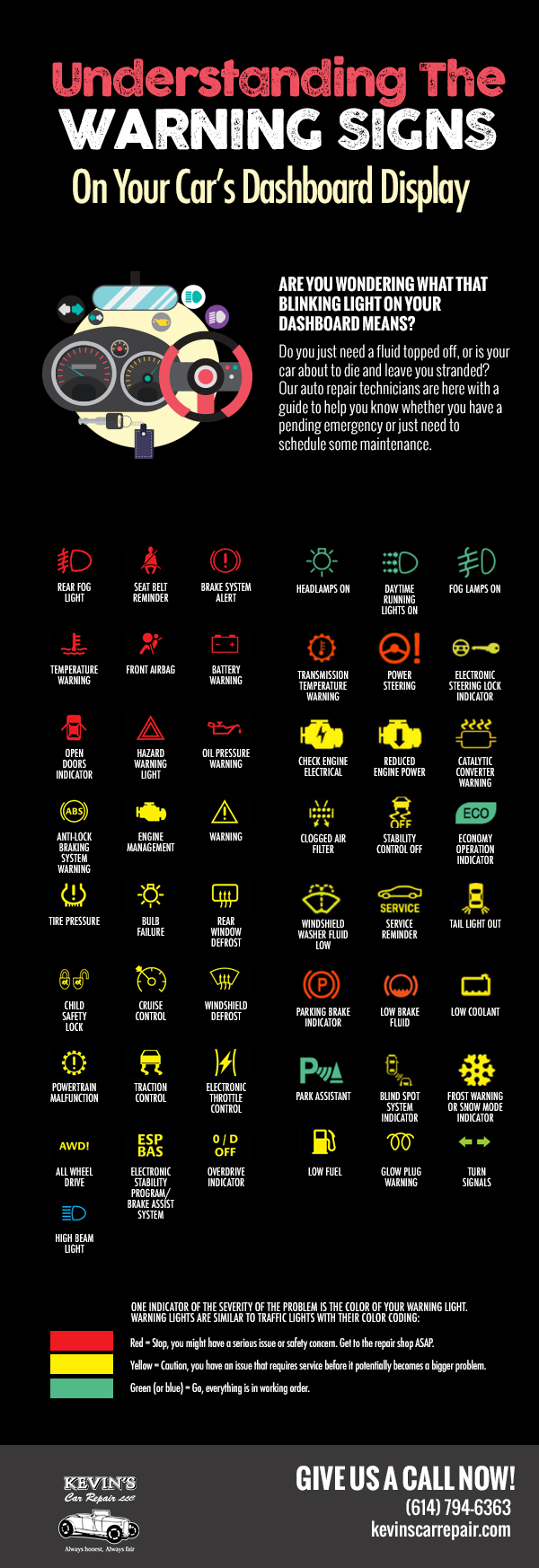Looking For Clarity On The Caution Lights Presented On Your Auto'S Control Panel? Find Out Exactly How They Relate To Your Vehicle'S Health And Safety
Looking For Clarity On The Caution Lights Presented On Your Auto'S Control Panel? Find Out Exactly How They Relate To Your Vehicle'S Health And Safety
Blog Article
self service car wash By-Sykes Torres
When you lag the wheel, those radiant warning lights on your control panel can be a bit complicated. Do you recognize what they're trying to inform you about your vehicle's wellness? Understanding the significance of these lights is vital for your security and the longevity of your car. So, the following time among those lights appears, would not you wish to decode its message precisely and take the essential steps to address it?
Common Caution Lighting and Interpretations
Identify typical caution lights in your auto and comprehend their definitions to make certain secure driving.
The most normal warning lights consist of the check engine light, which signifies problems with the engine or emissions system. If this light comes on, it's essential to have your vehicle examined immediately.
The oil pressure cautioning light suggests low oil pressure, needing instant focus to avoid engine damages.
A blinking battery light may recommend a damaged billing system, potentially leaving you stranded if not resolved.
The tire stress surveillance system (TPMS) light signals you to reduced tire stress, impacting automobile stability and fuel effectiveness. Ignoring this can bring about dangerous driving conditions.
The abdominal muscle light indicates a problem with the anti-lock braking system, jeopardizing your ability to stop quickly in emergency situations.
Finally, https://www.clickorlando.com/news/local/2022/06/16/1-dead-in-fire-at-business-near-orlando/ alerting light warns of engine getting too hot, which can result in serious damage if not settled swiftly.
Comprehending these common warning lights will certainly assist you attend to problems promptly and maintain secure driving problems.
Relevance of Prompt Attention
Recognizing the common caution lights in your car is just the primary step; the value of quickly addressing these cautions can not be stressed enough to ensure your safety when traveling.
When a caution light illuminates on your dashboard, it's your auto's way of connecting a possible problem that needs focus. Neglecting these warnings can lead to a lot more severe issues down the road, endangering your safety and security and potentially costing you a lot more in repairs.
Motivate interest to alerting lights can protect against failures and mishaps. As an example, a blinking check engine light might suggest a misfire that, if left ignored, could create damage to the catalytic converter. Resolving this quickly can conserve you from an expensive repair service.
Likewise, a brake system advising light might signify low brake liquid or used brake pads, crucial elements for your safety and security when driving.
DIY Troubleshooting Tips
If you observe a caution light on your dashboard, there are a couple of DIY fixing suggestions you can attempt before looking for expert aid.
The very first step is to consult your vehicle's handbook to comprehend what the particular warning light suggests. Occasionally the issue can be as easy as a loosened gas cap setting off the check engine light. Tightening up the gas cap might settle the trouble.
An additional typical issue is a reduced battery, which can set off numerous advising lights. Examining the battery connections for corrosion and guaranteeing they're safe and secure might deal with the problem.
If a warning light lingers, you can try resetting it by detaching the cars and truck's battery for a couple of mins and afterwards reconnecting it. Furthermore, inspecting your car's liquid degrees, such as oil, coolant, and brake fluid, can assist repair warning lights associated with these systems.
Conclusion
In conclusion, understanding your cars and truck's warning lights is necessary for keeping your automobile running efficiently and safely. By promptly dealing with these informs and understanding what they indicate, you can stay clear of pricey fixings and potential break downs.
Remember to consult your cars and truck's handbook for particular details on each warning light and act appropriately to guarantee a trouble-free driving experience.
Stay educated, stay safe when driving!
